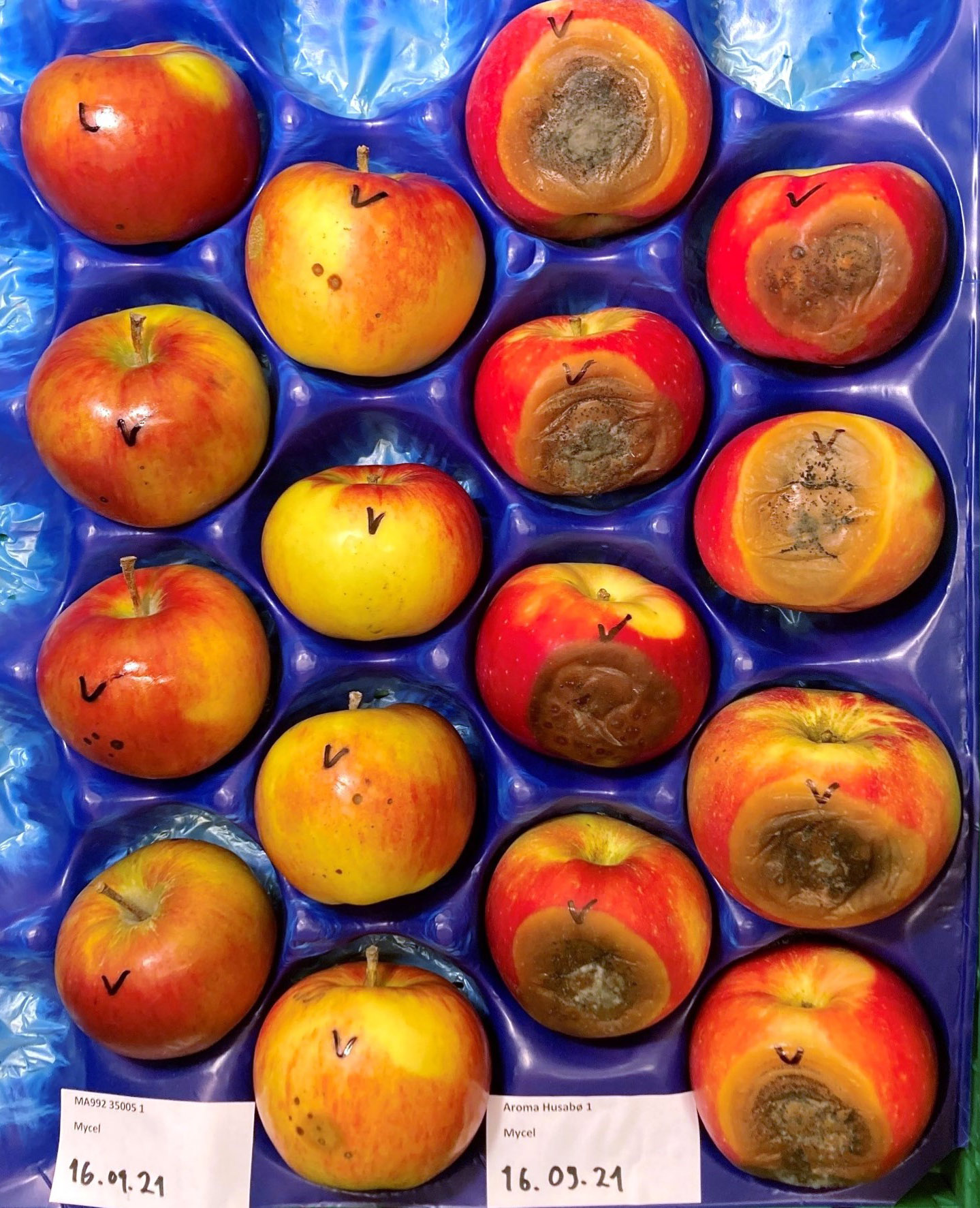
NORDFRUIT Apple – Pre-breeding for Future Challenges in Nordic Apples
Project Leader:
Dr. Stein Harald Hjeltnes, Graminor, Norway.
Project Partners:
Plant breeding entities: Graminor, Norway; LUKE, Finland; SLU, Sweden.
Academic institutions: CU-PLEN, Denmark.
Project Grants:
2021: TSEK 3.918 (shared equally between the PPP and partners).
Main Goals:
- Genetic dissection of partial resistance to European fruit tree canker by QTL mapping approach.
- Establish a breeding tool for storage rot tolerance.
- Complete phenotypic data for prioritized cultivars and characters.
- Marker validation of selected traits.
Phenotyping of field resistance, storage rot disease and phenology/fruit quality was divided in separate work packages. The phenotyping for European fruit tree canker of a (‘Aroma’ x ‘Discovery’) family along with ancestors of other offsprings of ‘Aroma’ and control cultivars was finalized by SLU, and several QTLs were detected. Several offsprings combining high resistance and good fruit quality were identified, and are potential parents for breeding. The developed protocol for storage rot tolerance were found too time-consuming to be utilized as a breeding tool, and initial trials with digital image analyses were conducted and seem promising. Phenotypic data for other traits recorded in the partners’ field collections was carried out in order to fill gaps in previous records and shared on a common platform in Dropbox, along with other phenotypic and genotypic data.
The data was collected on a selected core collection of 50 genotypes and a diversity panel of 176 genotypes defined in the previous PPP NORDFRUIT project (2018-2020). The traits studied were full flowering, harvest date, firmness, soluble solids content, total acidity and average fruit weight. SLU shared data for 132 accessions, Luke for 44 accessions and Graminor for 30 accessions. Data from previous work on single phenol data of 214 accessions was provided by SLU and shared to the consortium. All these phenotypic data are kept by the partners and at a common platform along with SNP-data for future use. Initial studies were conducted to test on available markers, but the work related to KASP markers was delayed due to lack of respond from providers.
A DNA-marker developed from a NAC-transcription factor associated with earliness and harvest time was validated on the core- and diversity panels. It showed overall a relative strong association, which means that the results can be used for preselection of parents in programs aiming at breeding for earliness and subsequently for selection among progenies at the seedling stage in Nordic apple breeding. Validation of the markers both from European fruit tree canker and phenotyping of phenology and fruit quality traits was continued in a PhD-project (Jonas Skytte av Sätra). The common data are valuable sources for further collaboration to elaborate genome assisted apple breeding in the Nordic countries.
/Dr. Stein Harald Hjeltnes, Graminor
